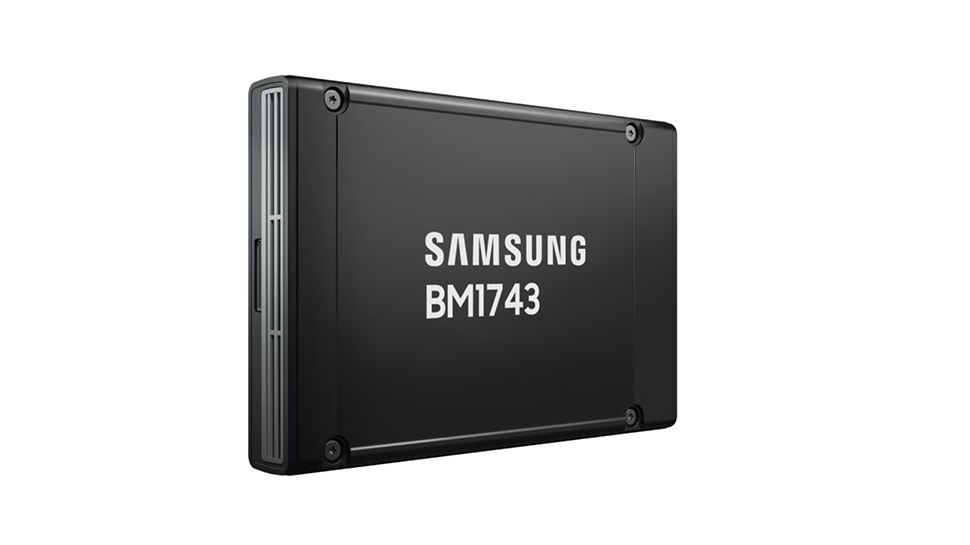Nearly a year after it was first announced, Solidigm’s 61.44TB 192-layer PCIe 4.0 NVMe SSD is about to get some serious competition from Samsung.
The South Korean tech giant has quietly unveiled the BM1743, a 176-layer, 61.44TB SSD built using its seventh-generation QLC V-NAND technology. This nearly doubles the layer count of previous iterations and improves bit density while reducing costs.
While the BM1743 will initially be available in a U.2 (2.5-inch) form factor, Samsung says there will also be an E3.S variant that will support PCIe Gen5 for an additional performance boost.
Improved reliability
The BM1743 promises sequential read speeds of up to 7200MB/s and write speeds of up to 2000MB/s. Random read and write speeds have been quadrupled compared to Samsung’s previous BM1733 SSD, which was launched in 2020. A huge jump from its predecessor’s 15.36TB, the BM1743’s capacity has ballooned to 61.44TB, and Samsung’s roadmap suggests an even larger 122.88TB model is on the way.
Samsung’s BM1743 not only boosts storage capacity and data transfer speeds, but also exhibits lower power consumption and improved reliability. The drive writes per day (DWPD) metric has increased from 0.18 to 0.26, and the data retention period in the off state has been extended from one month to three months.
Naturally, the new drive is not intended for consumer PCs, but is instead designed for use in data centers, reducing costs and increasing efficiency in data-intensive operations, benefiting cloud services and AI workloads.
Samsung and Solidigm aren’t the only manufacturers promising large-capacity SSDs. Western Digital also recently announced a 64TB SSD, which aims to tackle data storage for AI applications. Part of WD’s expanded Ultrastar DC SN655 enterprise-class range, it was announced at Computex 2024 and is expected to arrive later this year. It’s probably only a matter of time before companies like SK hynix, Micron, and Kioxia follow suit and introduce their own similarly sized drives.









